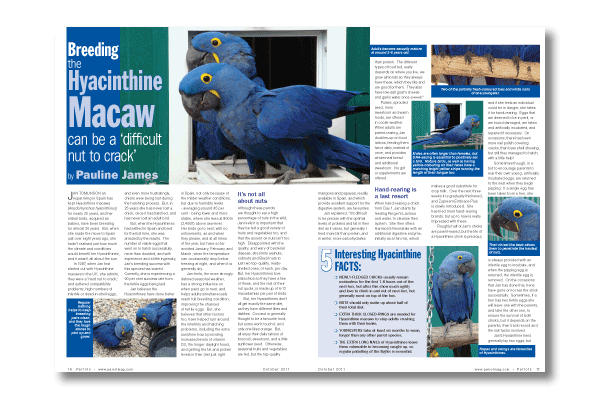Breeding the Hyacinthine Macaw can be a ‘difficult nut to crack’
Jan Tomlinson an expat living in Spain has kept Hyacinthine macaws (Anodorhynchus hyacinthinus) for nearly 25 years, and her oldest birds, acquired as babies, have been breeding for almost 20 years. But, when she made the move to Spain just over eight years ago, she hadn’t realised just how much the climate and conditions would benefit her Hyacinthines, and it wasn’t all about the sun.
In 1987, when Jan first started out with Hyacinthine macaws in the UK, she admits, they were a ‘hard nut to crack,’ and suffered compatibility problems, high numbers of infertile or dead-in-shell eggs, and even more frustratingly, chicks were being lost during the hatching process. But, in 25 years she has never lost a chick, once it has hatched, and has never lost an adult bird.
But, when the Hyacinthines had settled in Spain and bred for the first time, she was amazed by the results. The number of viable eggs that went on to hatch successfully, more than doubled, and with experience and a little ingenuity, Jan’s breeding success with this species has soared. Currently, she is experiencing a 90 per cent success rate from the fertile eggs being laid.
Jan believes the Hyacinthines have done better in Spain, not only because of the milder weather conditions, but due to humidity levels - averaging around 45 per cent - being lower and more stable, where she lives at 800m (2,400ft) above sea-level. Her birds go to nest, with no enticements, as and when they please, and at all times of the year, but have so far avoided January, February and March, when the temperature can occasionally drop below freezing at night, and when it is generally dry.
Read more in the magazine…

